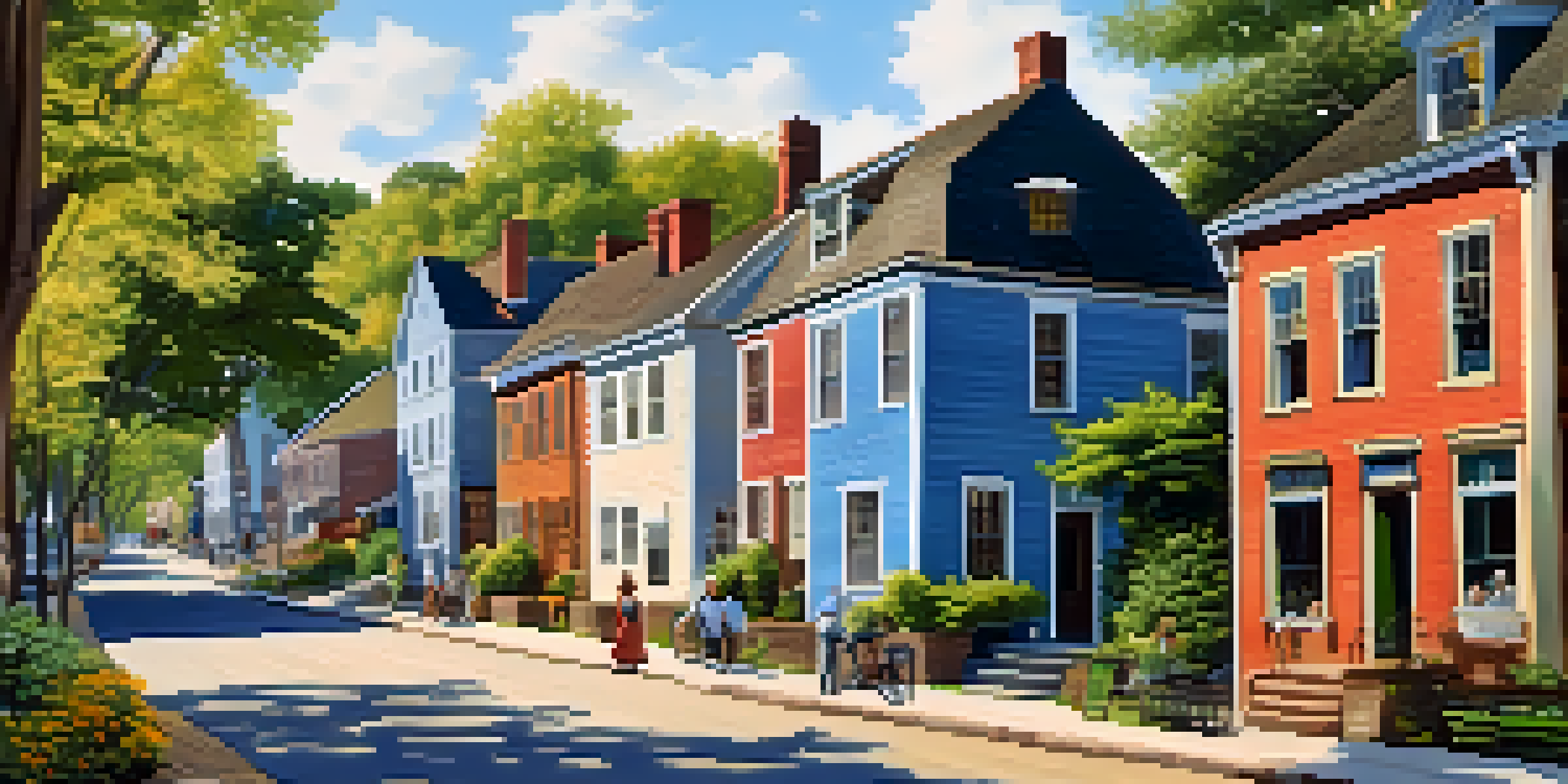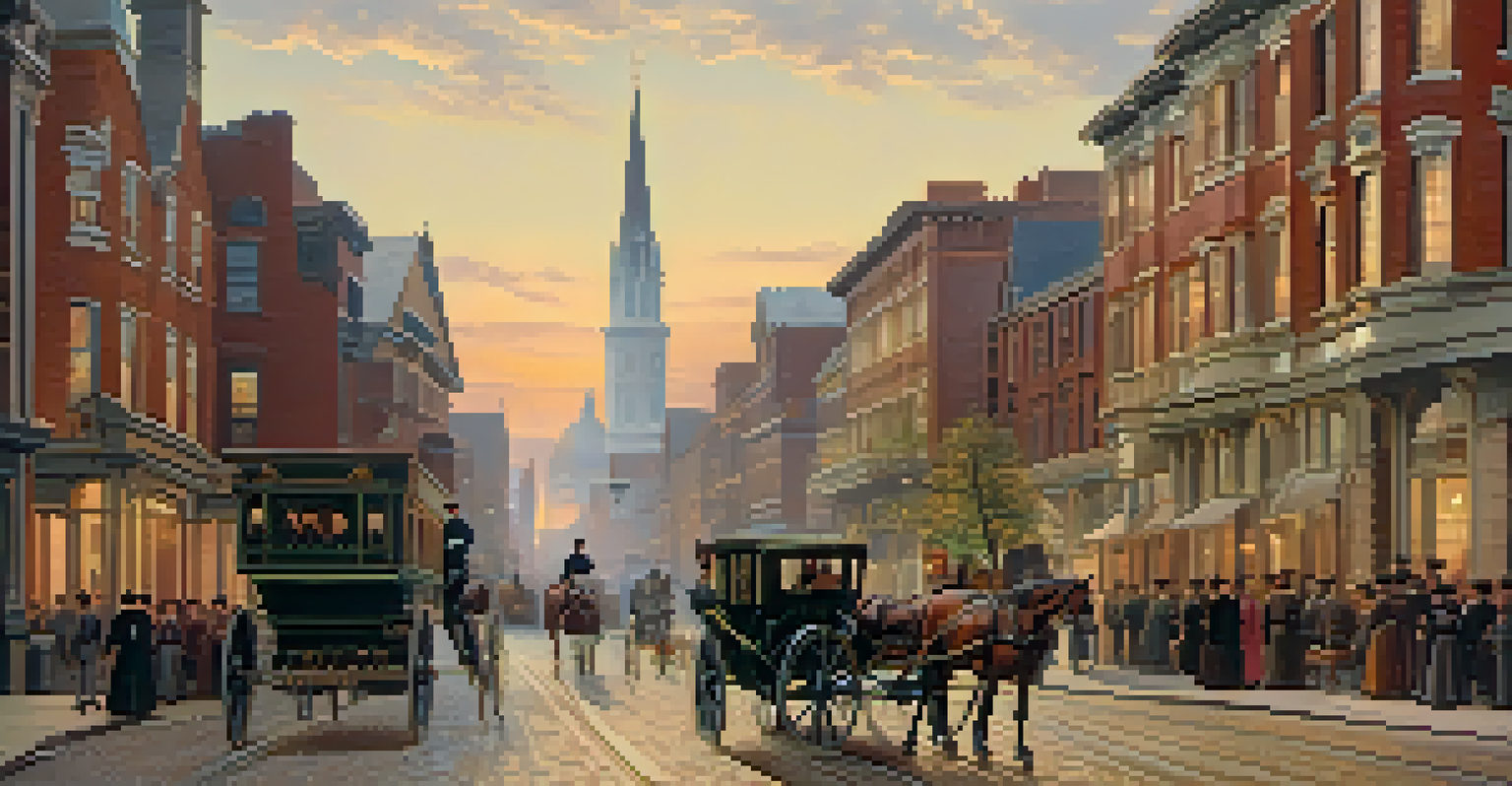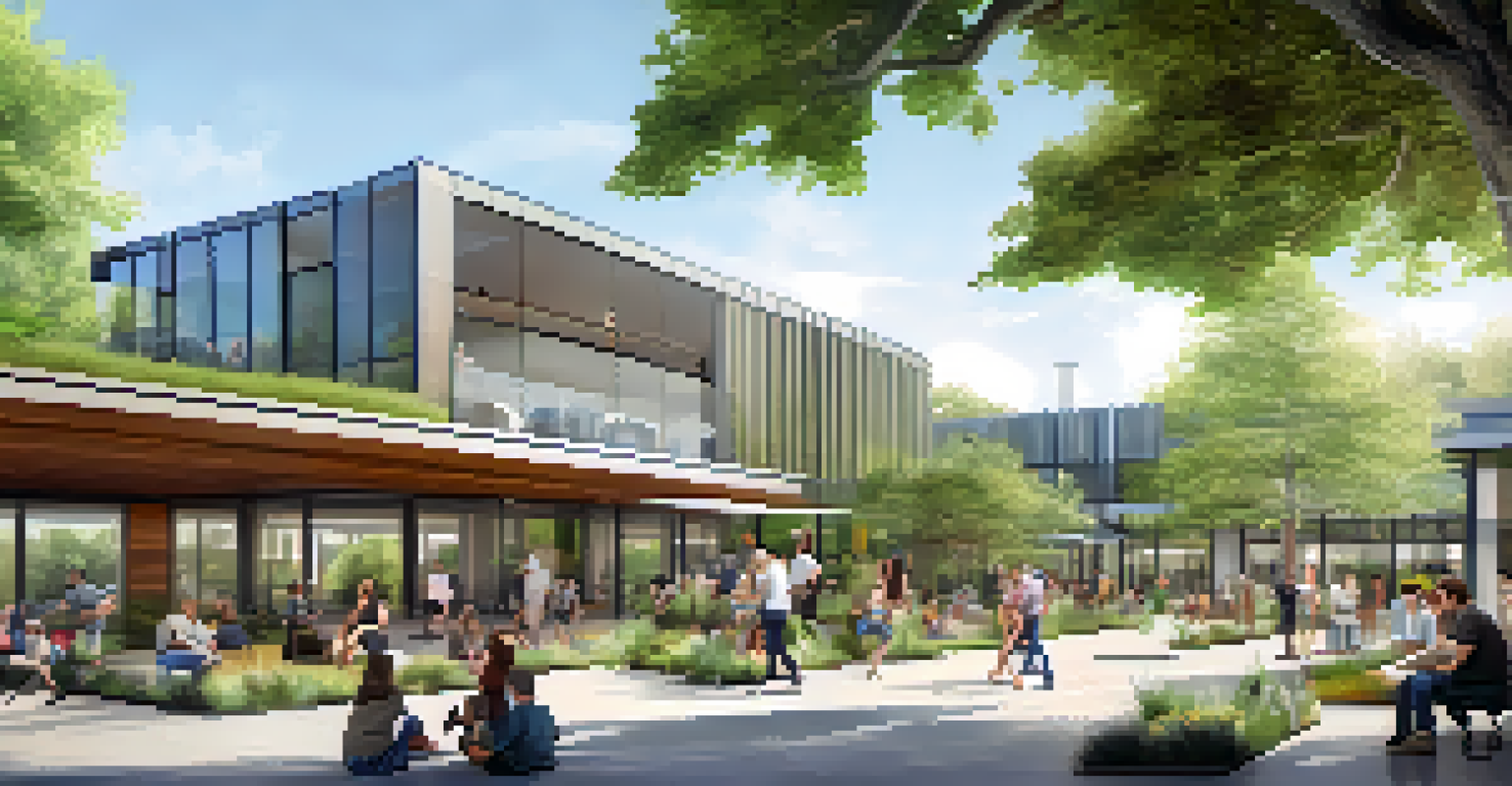The Evolution of Rochester's Architectural Styles Over Time

The Early Foundations: Rochester's Pre-19th Century Architecture
Before the 19th century, Rochester's architecture was primarily influenced by colonial styles, characterized by simplicity and practicality. Early settlers brought their European designs, which laid the groundwork for the city’s architectural identity. These structures often included basic wooden homes and utilitarian buildings that reflected the needs of a growing community.
Architecture is the learned game, correct and magnificent, of forms assembled in the light.
As Rochester developed, the influence of the Federal style became evident, with its symmetrical shapes and decorative elements. Buildings from this period often featured gabled roofs and simple decorative moldings that gave a nod to the elegance of earlier colonial designs. This blend of functionality and aesthetic appeal marked the beginning of Rochester's architectural journey.
This early architectural phase set the stage for the more elaborate styles that would emerge in the coming decades, establishing a foundation rooted in both necessity and the charm of early American design.
The Flourishing 19th Century: Gothic and Italianate Influences
The mid to late 19th century was a period of remarkable growth for Rochester, leading to the emergence of the Gothic Revival and Italianate architectural styles. Many buildings from this era showcased intricate details, such as pointed arches and decorative brackets, which added a sense of grandeur to the urban landscape. This shift reflected not only the prosperity of the city but also a desire to create a lasting legacy.

The Italianate style, characterized by its flat roofs, tall windows, and elaborate cornices, became particularly popular among affluent residents. Homes and commercial buildings began to feature these elements, further diversifying Rochester's architectural palette. This eclectic mix of styles contributed to a unique cityscape that still captivates visitors today.
Rochester's Architectural Evolution
Rochester's architecture reflects its growth and identity, showcasing a blend of styles from colonial homes to modern sustainable buildings.
As the city continued to evolve, these architectural styles played a crucial role in defining its character, blending elegance with the practical needs of a burgeoning urban center.
The Rise of the Industrial Era: Romanesque and Beaux-Arts Styles
With the dawn of the industrial era in the late 19th century, Rochester experienced a architectural renaissance, particularly with the introduction of Romanesque and Beaux-Arts styles. The Romanesque style, known for its robust forms and heavy stonework, symbolized strength and durability, reflecting the city’s industrial backbone. Notable examples include the iconic Rochester City Hall, which stands as a testament to this era’s architectural ambition.
The details are not the details. They make the design.
Meanwhile, the Beaux-Arts style emerged as a blend of classical architecture with modern elements, characterized by grandiose designs and elaborate details. Buildings from this period often featured monumental staircases, expansive plazas, and intricate sculptures, creating a sense of grandeur that was both impressive and inviting. This style represented the city’s aspirations during a time of economic growth and cultural flourishing.
Together, these styles left an indelible mark on Rochester’s architectural landscape, showcasing the city’s growth and ambition during a transformative period.
The 20th Century: Modernism and the Shift to Simplicity
As the 20th century unfolded, Rochester's architecture began to embrace modernism, moving away from ornate designs towards simplicity and functionality. This shift was driven by a desire for efficiency and a response to the changing needs of urban populations. Buildings started to feature clean lines, open spaces, and minimalistic designs, reflecting the evolving tastes of the time.
Notable examples of modernist architecture in Rochester include the George Eastman Museum and the Rochester Institute of Technology’s campus buildings. These structures often incorporated new materials and technologies, such as steel and glass, which allowed for innovative designs. The emphasis on light and space created environments that fostered creativity and collaboration.
Influence of Historical Styles
The city’s architectural landscape has been shaped by various historical styles, including Gothic Revival and Beaux-Arts, which signify its cultural aspirations.
This departure from traditional styles marked a significant turning point in Rochester's architectural narrative, paving the way for future developments that would continue to shape the city.
Post-War Era: A Blend of Styles and Urban Renewal
The post-war era in Rochester brought about a surge of urban renewal projects that reshaped the city’s architectural landscape. This period saw a blend of styles as older buildings were renovated and new constructions emerged. The integration of modernist principles with historical elements resulted in a unique architectural dialogue that honored the past while embracing the future.
One of the most notable projects was the transformation of the Eastman Theatre and surrounding areas, which combined historic preservation with contemporary design. These efforts not only revitalized the downtown area but also fostered a sense of community and cultural pride. The inclusion of green spaces and pedestrian-friendly designs reflected a growing awareness of urban livability.
This era exemplified the adaptability of Rochester's architecture, showcasing a city that was both respectful of its heritage and forward-thinking in its approach to urban development.
The Contemporary Scene: Sustainable and Innovative Designs
Today, Rochester's architectural scene is characterized by sustainability and innovation, reflecting a broader global trend towards environmentally friendly design. New buildings are increasingly incorporating green technologies and sustainable materials, aiming to reduce their carbon footprint while enhancing the quality of life for residents. This focus on sustainability not only addresses environmental concerns but also promotes health and well-being.
Prominent examples include the College Town development and various LEED-certified buildings that highlight the city’s commitment to a greener future. These structures often feature energy-efficient systems, green roofs, and community spaces that encourage social interaction. Such designs resonate with the community's values of progress and responsibility, showcasing a harmonious blend of aesthetics and functionality.
Focus on Sustainability Today
Current architectural trends in Rochester emphasize sustainability and innovation, aiming to reduce environmental impact while enhancing community well-being.
As Rochester navigates the complexities of modern urban life, its architecture continues to evolve, demonstrating a commitment to innovation and sustainability while honoring its rich history.
Rochester’s Architectural Heritage: A Reflection of Its Identity
Rochester’s architectural evolution is not just a series of styles; it is a reflection of the city’s identity and the stories of its people. Each architectural phase tells a tale of growth, change, and resilience, illustrating how the city has adapted to the needs of its residents over time. This rich tapestry of styles serves as a visual narrative of Rochester’s journey through history.
From the early colonial homes to modern sustainable buildings, each structure contributes to a collective memory that shapes the community’s character. This architectural heritage is celebrated through various preservation efforts and community initiatives that aim to protect the city's unique identity. By valuing these historical landmarks, Rochester honors its past while looking forward to its future.

In essence, the city’s architecture is a living testament to its evolution, embodying the spirit of innovation, resilience, and pride that defines Rochester and its people.